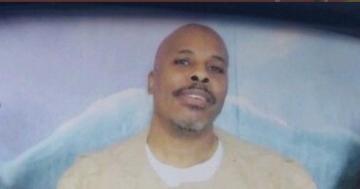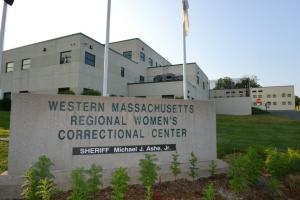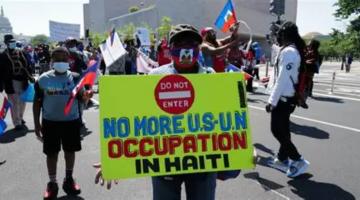Black people are disproportionately convicted of felonies across New York State. In Manhattan, a Black person is 21 times more likely to be convicted of a crime than a white person.
Originally published in NYCLU.org.
It has long been established that people of color — and especially Black people — are disproportionately criminalized, prosecuted, and incarcerated by the criminal legal system. When it comes to arrests, charges, convictions, and sentences, at every step, Black people are treated much more harshly than white people. But even though this reality is not new, just how unequal the system is across New York is still surprising:
In Manhattan — one of the wealthiest and least equal places in the country — courts convicted Black people of felonies and misdemeanors at a rate 21 times greater than that of white people over the past two decades. This disparity is the largest of any county in the state.
This troubling statistic features prominently in a lawsuit filed recently by the New York Civil Liberties Union challenging the constitutionality of a ban on people with felony convictions serving on juries in Manhattan. The ban applies statewide, but the case focuses on Manhattan where the racial disparity is the most severe. As many as one quarter of all otherwise jury-eligible Black residents in Manhattan are barred from serving on juries because of a prior felony conviction. For Black men, the disenfranchisement is even more severe: the law likely disqualifies more than 40 percent of them from jury service.
For decades, political and law enforcement leaders have flooded Black neighborhoods with police, while also arresting Black people more frequently regardless of what neighborhood they’re in. Prosecutors then over-charge Black people compared to white people accused of the same crimes.
This has resulted in racial disparities in felony conviction rates. These convictions, in turn, have devastating impacts on people’s ability to participate in society, secure a job, find a place to live, and get an education. But they also fuel a cycle of more racially-biased convictions.
That’s because jury disenfranchisement not only shuts thousands of Black residents out of civic engagement, but it strips people of their right to be judged by a jury of their peers. A jury system that underrepresents Black New Yorkers inevitably leads to more convictions of Black people.
Racial Disparities in Counties Across the State
This isn’t just a New York City problem. While in Brooklyn, the largest county in the state, Black people were convicted of felonies and misdemeanors at a rate of about seven times that of white people, a new NYCLU analysis of data from 2002-2019 shows that, in every single county in New York, Black people were arrested and convicted of offenses at disproportionate rates.
Schenectady County has a population of about 120,000 people, 97,000 of whom are white and about 9,000 of which are Black. In the past two decades, the county has convicted 3,000 Black people of felonies and 2,500 white people, despite the ten-fold difference in population. Black people in Schenectady are so over-criminalized that, in the last two decades alone, there is a felony conviction for every three Black residents in the county. In Albany County and Onondaga County, Black people are convicted of felonies at a rate 10 times that of white people.
Statewide, Black New Yorkers account for roughly 40 percent of misdemeanor and felony convictions over the last two decades while only representing 14 percent of the state’s population. Latinx New Yorkers were convicted of 21 percent of misdemeanors and 22 percent of felonies despite making up about 16 percent of the statewide population. White people, on the other hand, are about 60 percent of the state population but account for only 36 percent and 35 percent of misdemeanor and felony convictions, respectively.
These numbers mean Black people were convicted of felonies and misdemeanors at a rate roughly five times greater than white people. And Latinx people were convicted of felonies and misdemeanors at more than twice the rate of white people.
Drug conviction and arrest numbers paint an especially vivid picture of a racist criminal legal system in which behavior has little to do with who gets a criminal record and who doesn’t. White people are more likely to use drugs than people of color. Yet in Manhattan, Black people are more than 20 times more likely to be arrested and convicted of felony drug offenses.
In the ten most populous counties in the state, where about 70 percent of New Yorkers reside, Black people were more than 13 times more likely to be convicted for felony drug offenses and Latinx people were eight times more likely to be convicted for felony drug offenses.
The ban on people with felony convictions serving on juries disenfranchises people across New York and it demands a statewide solution — legislators should pass a bill eliminating the ban and look to remove all public and private barriers to reintegration that formerly incarcerated people face.
This is essential for civic participation and for making our deeply prejudiced criminal legal system more fair. We’ve seen what happens when a jury pool lacks diversity: Black communities have less say in the administration of justice and more Black New Yorkers end up trapped in prison. As one of the plaintiffs in the NYCLU’s lawsuit, Daudi Justin, explains, “Each juror brings a unique perspective and that should include the informed perspective of people who have experienced the criminal legal system firsthand.”
Jesse Barber, Research Analyst, Legal at NYCLU. Simon McCormack is Senior Writer, Communications at NYCLU.



















